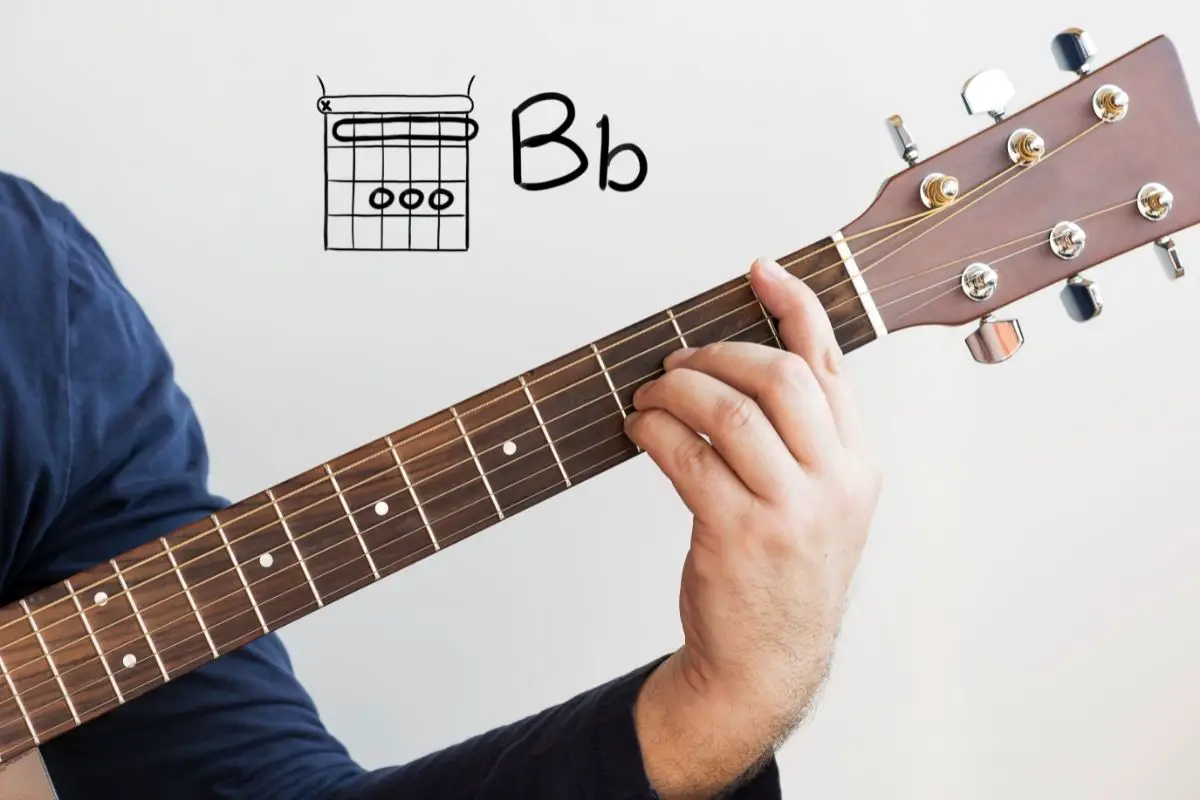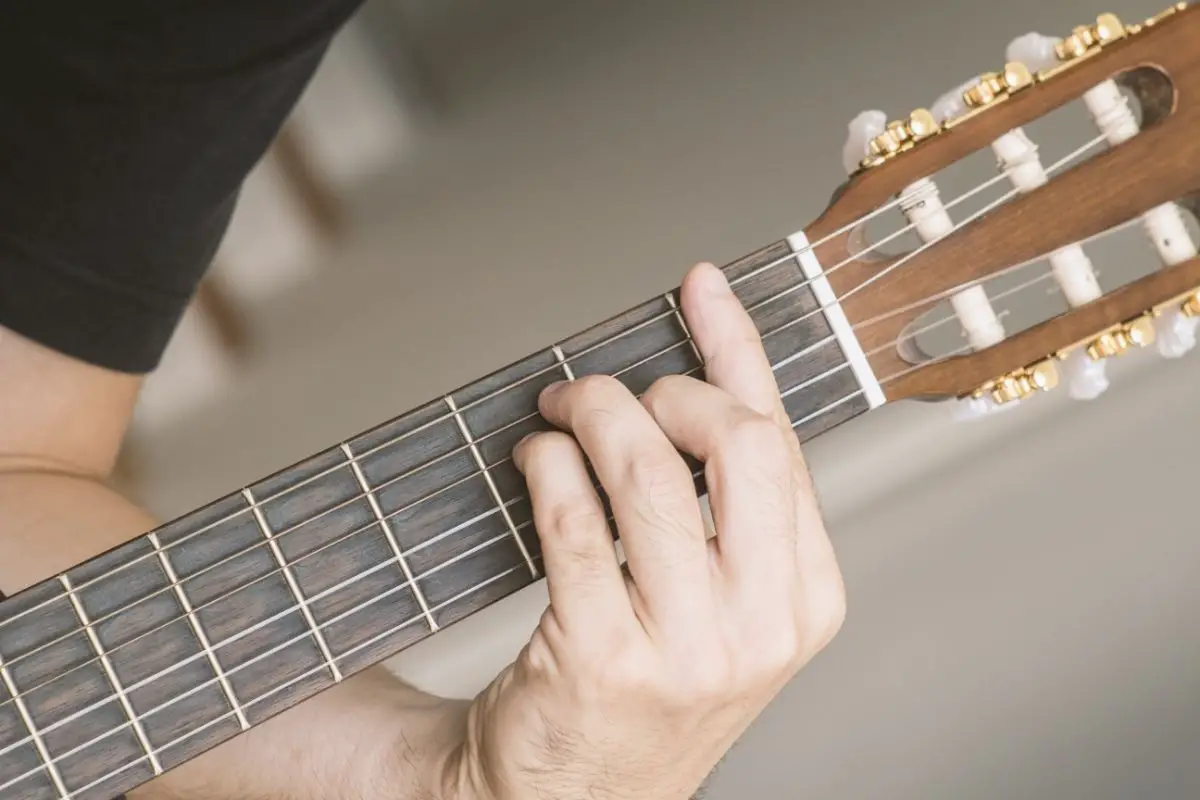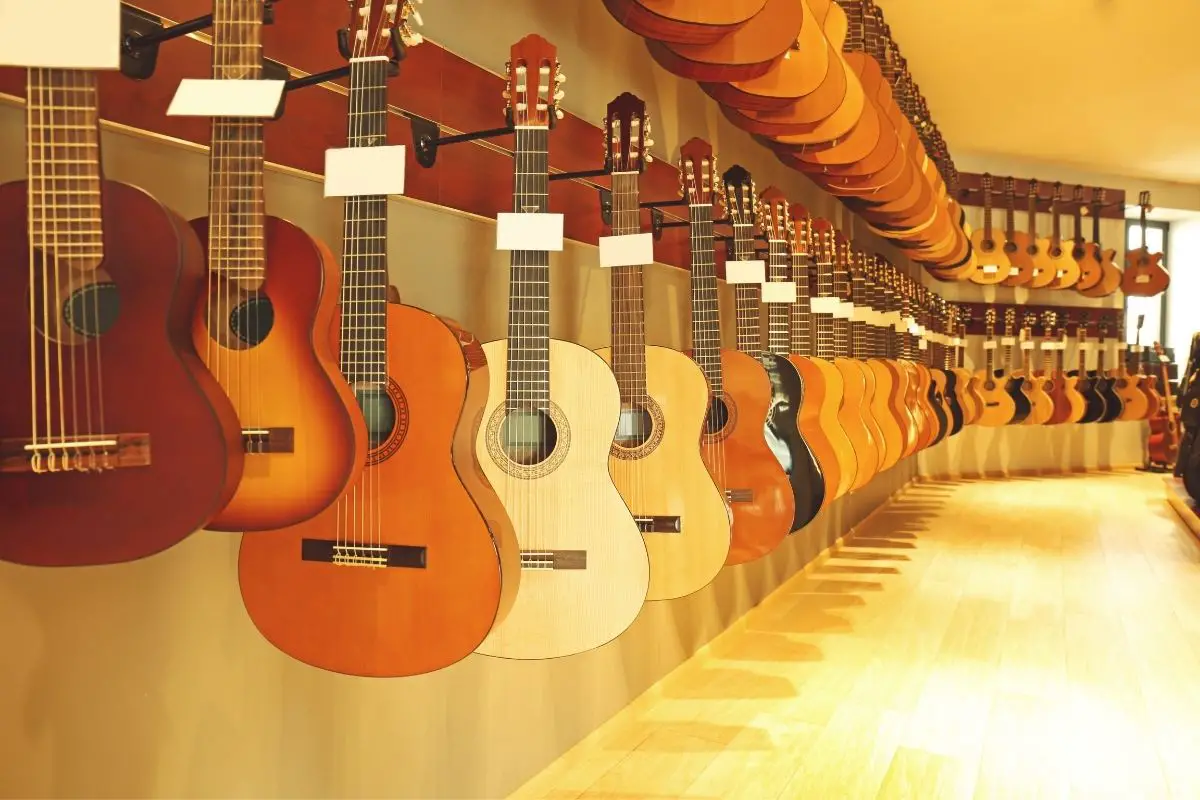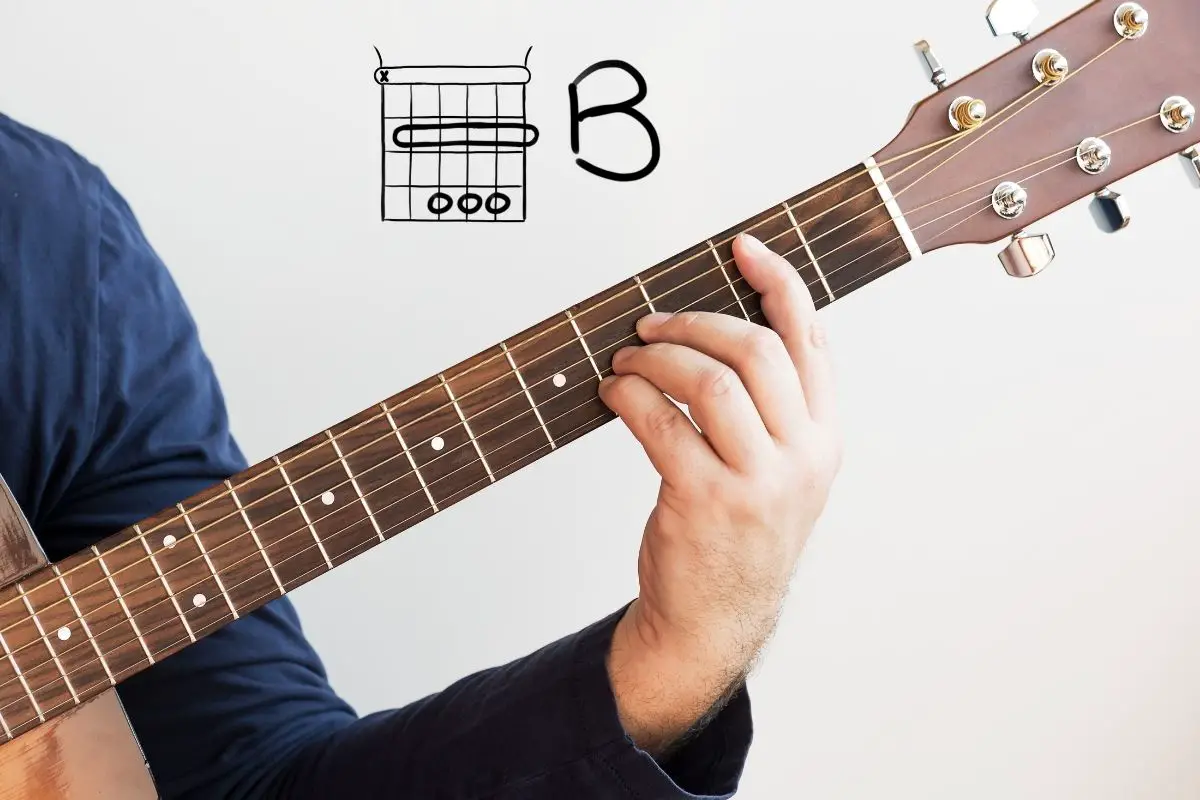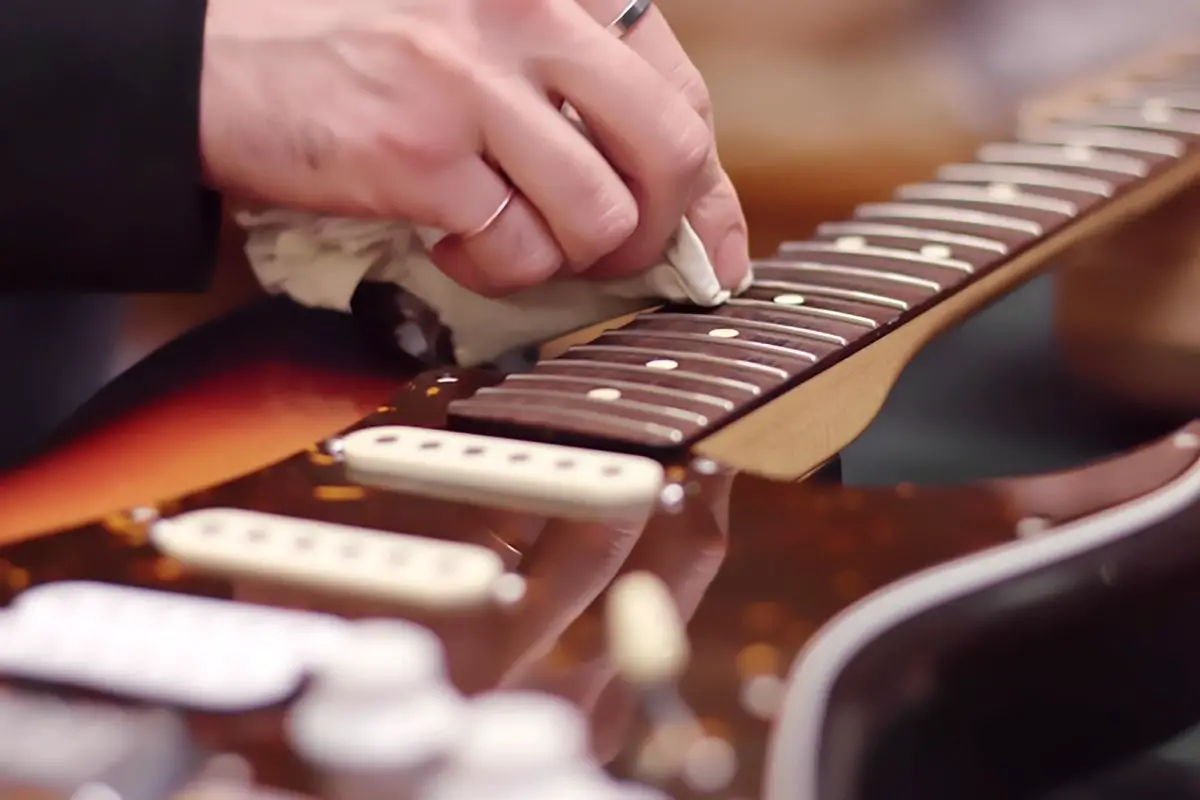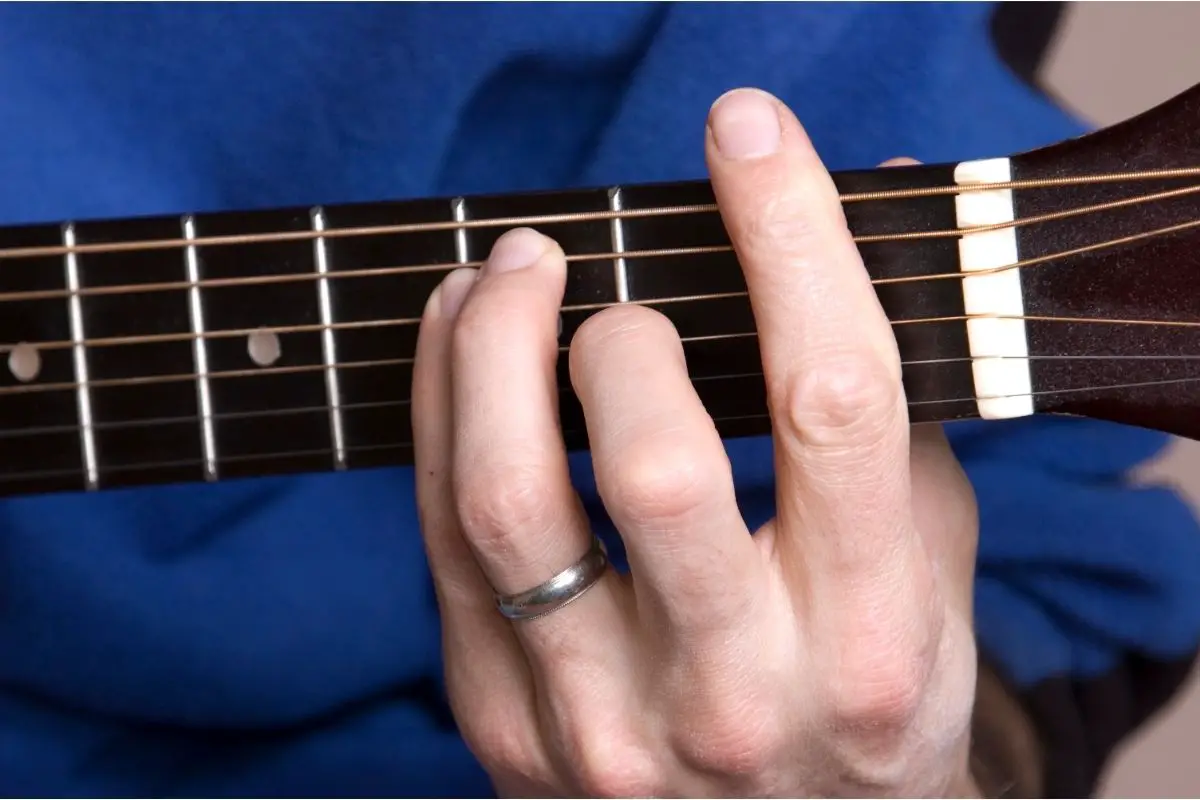Open D minor tuning is a great way to start playing songs in the key of G major.

This type of tuning allows you to play chords using only three strings instead of four.
The trick is learning how to play these chords in open D minor tuning.
Open D Minor Tuning On A Guitar
For open D minor tuning, you will want to place your index finger on the third fret and then strum the bottom two strings.
When you do this, you will notice that the fourth string plays a different note than usual. It sounds like a C note, but it actually is an F note.
The reason for this is that the fourth string is tuned down one half step from normal (from E to F). If you were to use standard guitar tuning with all four strings, the fourth string would be tuned to Bb.
But since we are going to tune the fourth string down by a half step, it will sound like a C note when played with the other strings.
How Does D Minor Tuning Differ From Open D Tuning?
D minor tuning differs from open d tuning in that there are no extra notes added to the chord. Instead, the fourth string is tuned lower so that the first three strings can all play their respective notes as written.
In addition, if you wanted to play a song in open D minor tuning, the fifth string would not normally be used. However, in this case, the fifth string is also lowered by a half step so that it can still play its note.
You may have noticed that I said “normal” tuning. That’s because some people refer to open D minor tuning as “open D tuning” or even just “D minor tuning.”
While those terms are technically correct, they don’t really describe what is happening here. So, rather than calling it “open D tuning,” it is preferable to call it “open D minor tuning.”
Open D Minor Tuning In Blues
One thing about open D minor tuning that makes it useful for blues music is that most blues songs are written in the key of G Major.
Since the key of G Major has all seven natural notes, it doesn’t matter which string you choose to play each note on. You could easily play any of the following chords in open D minor tuning:
Gmaj7 – G, C, D, Em, Am, Bbmaj7 – G, D, Eb, Ab, Bb
Gmaj7/A – G, C, F, G, C, D
If you wanted to play a more traditional sounding version of these chords, you could always add an extra note to them. For example, you could play the Gmaj7/A chord in open D minor tuning as follows:
Gmaj9 – G, C, E, F, G, D
Gmaj9/A – G, D, F, G, Bb, E
Open D Minor Tuning In Folk Music
Another popular genre of music that uses open D minor tuning is folk music. Many folk songs are written in the keys of G, F, and C. As such, many of the chords listed above work perfectly well with open D minor tuning.
Here are a few examples of open D minor tuning being used in folk songs:
Folk Song Example 1 – “Cuckoo Bird” By The Kingston Trio
This song was originally written in the key of C Major. But since the song is in the key of G major, we can use open D minor tuning to make it easier to play.
Here is how the chord progression looks using open D minor tuning:
Gmaj7 – Gmaj7/Bb – Gmaj7 – A – Gmaj7
Folk Song Example 2 – “I Wish I Was A Mole In Your Ground” By John Denver
This song was originally written in G Major. But since the key of G Major only contains five of the seven natural notes, we need to use open D minor tuning.
Here is how the chords look using open D minor tuning (the numbers represent the fret):
Gmaj7(0) – Gmaj7(3) – Gmaj(6) – Gmaj5(1) – Gmaj4(2) – Gmaj3(3) – G
Gmaj7/Ab – Gmaj7/(Eb) – Gmaj6/Db – Gmaj5/Gb – Gmaj4/Gb – Gmajo3/Gb – Gmaja2/Gb
Folk Song Example 3 – “The House Of The Rising Sun” By The Animals
This song was originally composed in the key of C major. But since the key only contains four of the seven natural notes (C, D, E, and G), we need to use open D minor tuning. Here is one way to play the song:
Gmaj6/D – Gmaj6 – Gmaj6
Gmaj6 – G6 – Gmaj7b5/D – Gm7b5 – Gmaj6b4/D – Gm6b4 – Gmaj7a3/D – Gmajo3 – Gmaj6a2/D – Gmaja2 – Gmaj6(0)
Open D Minor Tuning In Rock And Pop Songs

There are also plenty of rock and pop songs that use open D minor tuning as well. These include the following:
Rock Song Examples 1 & 2 – “Tears Are Falling” By Bob Dylan
This song was originally written in D Major. But since the only two natural notes in the key of D Major are D and E, we need to use our new favorite tuning.
Here is how this song would sound if played in open D minor tuning:
G/D – G – D
G/D – D – G
G/D – E – G
G/E – G – E
G/E – E – G
Rock Song Example 3 – ‘Don’t Think Twice, It’s All Right’ By Bob Dylan
This is another great example of open D minor tuning being used in a rock song. This time, the song is from Bob Dylan’s album Highway 61 Revisited. The song starts out in the key of E minor.
However, since the key only has six of the seven natural notes in it, we need to use some open D minor tuning. So here is how the song sounds when played in open D minor:
Emaj7 – Emaj7/Bb7 – Emaj7 – Amaj7 – Emaj6/Bb6 – Emaj6 – Emaj7/Db7 – Emaj7
Emaj7/Bb/Bb – Emaj7/Gb7 – Emaj7/(Eb7) – Emaj6/Gb6 – Emaj6/(Eb6) – Emaj7/Eb7 – Emaj6
Rock Song Example 4 – “Homeward Bound” By Simon And Garfunkel
This song was originally recorded by Simon And Garfunkel in the key of B Flat Major. But since the entire song is in the key signature of B Flat Major, we need to use an alternate key signature for the song.
We could just use the standard B flat Major key signature, but then there would be no way to tell which note is meant to go where. Instead, we should use the open D minor key signature.
Here is how the song sounds with open D minor key signature:
Amaj7 – Amaj6/Db7 – Amaj6 – Bmaj7/A7 – Amaj6
Amaj7/Bb6 – Amaj7/Gb6 – Amaj7/(Eb6)
Amaj7/Eb6 – Amaj6/Eb6 – Bmaj6/Eb7 – Amaj6/(Eb7)
Rock Song Example 5 – “Hey Jude” By The Beatles
This song was originally released on the White Album. And while the song itself is in the key of F Major, the song actually uses the key signature of A Mixolydian.
Since the key signature of A Mixolydian does not contain any sharps or flats, we can use the standard key signature for the song without having to worry about which note goes where.
It is therefore suitable to be played in open D minor tuning. Here is how the original version of Hey Jude sounds in A Mixolydian:
Fmaj7 – Fmaj7/Amaj7 – Gmaj7/Fmaj7
Fmaj7/Ab7 – Fmaj6/Ab7 – Gmaj6/Fmaj7 – Fmaj7/Eb8 – Fmaj7
Fmaj7 – F7 – Gmaj9/Fmaj7/G7 – Gmaj8/Fmaj7b5 – Fmaj7b5
Fmaj7b4/D – Fmaj7a3 – Fmaj7 – F6/Eb7/G7 – Fmaj8/Eb6/G7
Fmaj6b4 – Fmaj6a2 – Fmaj6 – Fmaj7(0)
Conclusion
To conclude, open D minor tuning usually involves using the chords Gmaj6, Gmaj7b, Gmaj7a, Gmaj6b, Gmaj6, and Gmaj7.
The reason these chords are called open D minor is because they do not have any sharpened or flattened notes.
Any chords that do not contain sharp or flat notes are typically able to be played in open D minor tuning.
If you enjoyed this article, you might enjoy our post on ‘The 10 Most BEAUTIFUL Fingerpicking Songs Ever – Taught Easiest To Hardest‘.

My name is Howard Matthews and I have been playing the guitar since I was knee-high. My parents like to joke that I was pulling the strings even before I was born. In fact, one of my earliest memories is sitting on the couch with my dad’s guitar, wreaking havoc on the chords.
Now, 40 years later, I can attest that I play them much better than I did back then. I have followed in the footsteps of both my parents – much to their delight – and have been the main guitarist in my band for the best part of three decades.
Music has always been my passion, and until recently my life has been so consumed with it that I haven’t had a moment to have a breath (and I wouldn’t have it any other way)!

